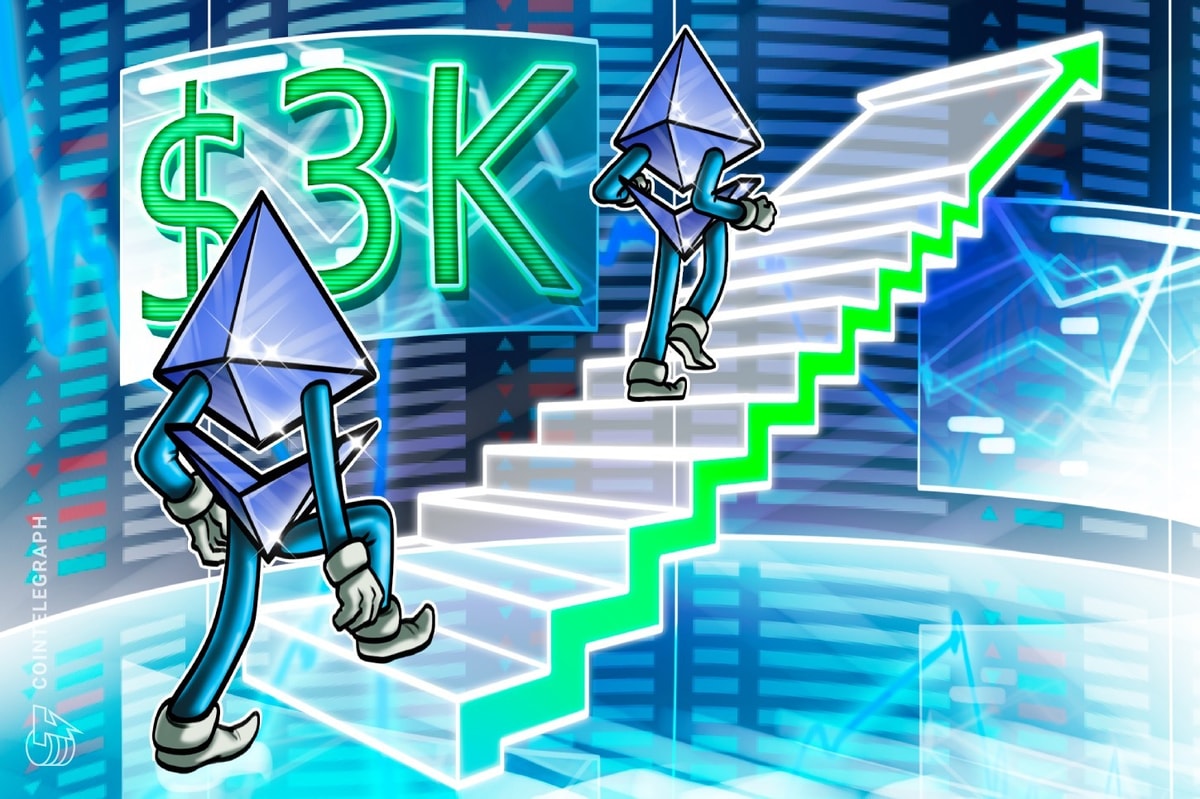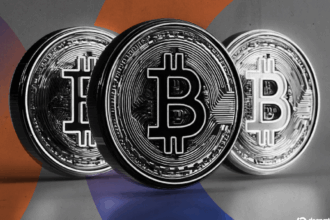Ethereum’s Technical Indicators Signal Market Hesitation Amid ETF Inflows
Updated: July 11, 2025 14:30 GMT
Despite a recent 13.5% price rally pushing Ether (ETH) to $3,000, traders remain skeptical about sustained momentum as derivatives markets display confidence gaps. The recent price surge appears largely driven by institutional flows into Ethereum exchange-traded funds, but questions linger whether this support will hold under continued scrutiny from technical indicators.
Key Market Indicators
- ETH derivatives markets show hesitation despite spot ETF inflows and rising TVL figures
- Layer-2 growth and lower fees haven’t translated to increased demand for ETH
Ethereum’s futures market indicates a marginal bullish tilt with the monthly futures premium currently standing at 5%, an improvement from the prior week’s 3.5% premium. This premium sits precariously on the neutral-bearish border—a stark contrast to the Jan. 23 high of $3,300 that characterized the last notable bullish signal.
ETH 30-day futures annualized premium. Source: laevitas.ch
Professional traders appear slightly less pessimistic now than two weeks ago, though confidence remains distant from the levels required to sustain extended gains. The options market currently reflects balanced conviction with a -3% delta skew, showing roughly equal money flowing into both call and put strategies—a condition that has prevailed for four consecutive weeks.
Ethereum Layer-2s Thrive at Expense of Network Demand
Ethereum remains depressed, down 41% from its November 2021 all-time high despite recent technical gains. Network fee reductions have diminished one potential upside driver as the burn mechanism relies on transaction activity. Over the last 30 days, Ethereum network fees fell 22% to $34.8 million according to Nansen data.
Top blockchains ranked by 30-day fees, USD. Source: Nansen
TVL Growth Fails to Translate into ETH Demand
While Ethereum’s Total Value Locked (TVL) has climbed from $50 billion three months ago to $73 billion—a demonstration of continued ecosystem engagement—this growth hasn’t matched expectations for sustained price action. Decentralized Exchange (DEX) trading volumes have slumped to a nine-month low despite this TVL expansion.
Ethereum TVL, USD (left, blue) vs. Ethereum DEX 7-day volumes (right). Source: DefiLlama
Ethereum’s layer-2 ecosystem generated $58.6 billion in DEX volumes over the past 30 days. However, the introduction of lower rollup fees through data blobs has yielded minimal impact on spot ETH demand, suggesting users migrating to layer-2 aren’t necessarily converting that activity into layer-1 ETH purchases.
Market structure comparisons highlight alternative chains outperforming despite lower TVLs. Comparing Ethereum’s reduced fee collection against Tron ($292.6M) and Solana ($25.3M) reveals inefficiencies that have prompted user migration to more fee-favorable blockchains.
Institutional Flows Support Recent Rally but Bear Questions Persist
Recent ETH price gains appear largely driven by a net $468 million inflow into US-listed exchange-traded funds over a four-day period. Institutional treasury purchases by companies like ShapLink Gaming (SBET) and Bit Digital (BTBT) have provided additional support.
ETH 30-day options delta skew at Deribit (put-call). Source: laevitas.ch
The disconnect between ETH’s price action and derivatives sentiment suggests institutional conviction may be isolated to specific use cases rather than broad confidence in a sustained bull market. While technical indicators show slight improvement from previous weeks, they remain positioned beneath crucial support levels.
The ecosystem’s trajectory appears dominated by ongoing discussions about whether current market conditions represent a structural shift or merely a temporary pause in the bull market thesis.
This article is for general information purposes and is not intended to be and should not be taken as legal or investment advice. The views, thoughts, and opinions expressed here are the author’s alone and do not necessarily reflect or represent the views and opinions of Cointelegraph.












